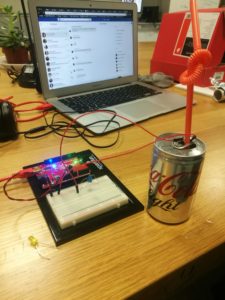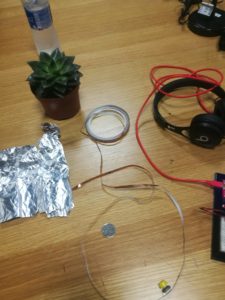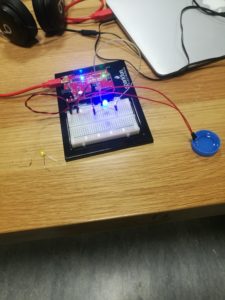Personally I quite disliked this reading, largely because as a physics major I have studied electricity before, and felt that the problems he identified showed a lack of of understanding on his part, rather than problems with the theory itself. I have no problem with attempting to explain things in simpler or more clever ways, but his approach in particular actually conveys misinformation. My biggest gripe is very fundamental, and has nothing to do with electron theory. He misrepresents the type of information that physics provides. For instance, he complains that it only answers “how?”, not “why?”. This is not a problem with electron theory it is an intentional and necessary part of physics, the techniques of any natural science are not suited to answer the question “why?”. At other times he complains that the electron doesn’t seem real because the attributes assigned it by electron theory don’t intuitively seem like attributes of real things, such as a poorly defined position. My problem with this is that intuition is misleading, and lack of well defined positions for anything, not just electrons is one of the most well “proven” theories in physics. I am sure that his eventual description of greenies is useful to anyone who is new to electricity or not mathematically minded, but I had so many issues with his preface that I could not bring myself to appreciate it.
Category: Your Work
Project Super Straw

It takes forever to know whether your water is actually going up your straw? Wanna look cool and different than everyone else even though you are doing the exact same thing? Or you just want to add some more fun to your mundane sipping experience? Look no further than the Super Straw!
You will know your water is half way through your straw for sure when the blue light is turned on because electric current passes through the liquid from one end of the wire to the other.

It took me a while to think of ideas so I just tried out some everyday objects that conduct electricity, including tin foil, coins, copper tape, cactus and water.

Then I entertained the idea of using water as a conductor. However, in the beginning, the light was too dim. So I dissolved a lot of salt in the water and the water became more conductive.
Now enjoy a little demonstration of the magic of Super Straw with music!!
There are no electrons
“There are no electrons” by Kenn Amdahl provides me with a new perspective of how an educational book could be written. It was a very easy and fun read since a lot of it was stories rather than plain instructions and descriptions. I know effective story-telling is the best way to reach people emotionally, but I did not know a good story can also teach people the fundamentals of the electron theory and challenge this presently well-accepted theory at the same time.
Most of the time, the author not only explains what things are, but also why they are what they are, how they came to be and what flaws there are in a light-hearted way. For example, the “positive” and “negative” current” could as well be called “Bartholomeow” and “Afred” and they wouldn’t be less accurate.
The biggest feature of this snippet of text is perhaps that it ridicules the electron theory and the entire scientific community. There are still many unexplainable behaviours and phenomena involving electrons, yet we are too indulged in our “scientific advancement” to challenge some of the “fundamental” theories anymore. After all, they are only “theories”.
The biggest surprise for me is that I actually remember a lot about the electron theory even though the article seems to be anti- electron theory. From now on, I will replace voltage with “need-to-party” and current with “traffic”.
There are no Electrons
So in the beginning, I had an impression that all he is trying to do is to show us, beginners and complete newbies when it comes to Electricity, that he had certain struggles while learning about electricity the hard way, not engaging one. Therefore, he mentioned it multiple times; his primary goal is to help us learn more about Electron theory and how does electricity work in a more fun way than the one he was taught by in his time. Going ahead, he would explain us the basics of Electron theory and try to make it relatable by connecting it somehow to our life. For instance, we know that opposite ( electrons and protons) charges do attract each other, which he believes, “would be a good rule for all of us to follow in our lives.” (11) Towards the middle of the book, he started opposing the Electron theory, trying to make us doubt it is real, making us feel as if we are part of a new generation that has to think differently if we want to understand the real explanation of how does electricity work. Later on, he started telling us about his encounters with a “Greenie” and a Wizard. That’s where I lost track of what was happening. I felt like he was pretty much describing the same Electron theory but in his own, more simplified, way, which I believe was indeed pretty fun to read but did not explain me anything new.
Overall, it was interesting to read and more importantly gave me certain ideas on how to write academic journals if needed.
